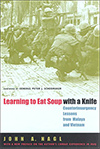Assumptions vs. Reality: Why It Pays to Challenge What You Know
By Major General (Retired) Tony Cucolo, Thursday, October 10, 2024
No one wants to make decisions in the dark – or even partial darkness. We want as much information as possible, yet very frequently, we do not have it and are forced to make assumptions. Like most leaders, I do not like assumptions; they are the unmade bed of decision-making. Just the definition should strike terror in the hearts of leaders facing important choices: an assumption is a belief about a current or future situation that is trusted to be true in the absence of facts. Is anyone comfortable planning with data or information that is “assumed to be true”?
In the current and future business environments, the existence of stated and unstated assumptions in decision-making processes will only increase. A combination of easily distracted staff, decision fatigue among leaders, a tendency to believe that a single data point is sufficient information for a decision, and the increasing reliance on the output of artificial intelligence all create a dangerous decision-making ambush for any leader embracing an assumption as a fact.
The military, and particularly the U.S. Army, has made the use and challenge of assumptions in decision-making a fine art. In fact, assumption challenging is a part of U.S. Army doctrine and practice. From my time as a young Captain in the Army writing operations orders for a one-hundred-soldier organization to progressing up to leading multi-national counterinsurgency efforts in Northern Iraq, I applied the process of “mission analysis” over my 35-year military career in all planning efforts. “Develop planning assumptions” is a specific step to be completed in this process, because the generation of assumptions is a necessity. Imagine the decision-making involved in planning complex, global campaigns and large-scale ground operations on foreign soil. A common assumption from my military past: “Ground supply lines will remain open during the operation.” What if they are interdicted or closed? What then? Another, unique assumption from counterinsurgency operations: “Host nation local law enforcement will support our efforts.” And what if they do not? How will that impact this plan?
For any leader, the number of unknowns at the start of planning is staggering and requires a set of assumptions if plans are to be written and decisions made at all. By drafting, challenging, and addressing assumptions, leaders in all types of organizations can reduce risk and strengthen their organizations against the unknown. With some slight modifications for the modern corporate workplace, the four-step approach outlined below, based on military doctrine and my experience in the military and business, can help you lead and execute plans and tasks while struggling with limited information.
Step One: The Necessity Test
Leaders should first ask the questions: Is this assumption necessary, as in, is this assumption or belief truly essential or required to make the decision? Whether true or false, does it matter? If you can plan or decide without the information, it is not essential and should be dismissed.
This is a simple yet important step because each valid and necessary assumption requires attention and work; assumptions do not go away until found to be true or false. Since any assumption will introduce some level of error to a plan or decision, leaders should do their best to minimize their number.
Step Two: The Validity Test
Once you have determined a set of assumptions necessary for planning and decision-making, leaders then conduct the most important challenge discussion by applying intellectual rigor. For example, “Host nation local law enforcement will give us full support,” or, from my current corporate work, “Upon assumption of the contract, the current workforce will remain in place,” are assumptions that must be challenged while still in planning, hence the Validity Test. Since the team believes each assumption is true, leaders should ask the following questions about each assumption:
-
“Is this assumption logical?”
-
“Is it realistic?”
-
“What makes you believe this to be true?”
-
“Are we certain there are no facts available?
-
“Can further research be done? Can we query for multiple data points?”
-
“What if it is not true? How would that impact the outcome of this decision (plan)?”
There are additional benefits to this step. Each time those questions are asked, you are developing and improving the skills of your staff. Answering those questions engenders a dialogue between leader and staff that drives critical thinking, develops communication skills, and encourages candor. Challenging assumptions makes your organization stronger.
Step Three: Plan for False
For those assumptions that survive the Validity Test, leaders must talk through (if not deliberately plan for), each assumption deemed necessary to the decision-making process. In the military, these are called “branch plans” and produce contingencies for actions required to deviate from the plan.
Using my previous examples, if host nation law enforcement does not give us full support, what will we do? Planning for that possible outcome resulted in the coordination of additional resources and authorities. If when we assume the contract, we lose members of the current workforce, what will we do? “Planning for false” reduces risk. In this case, it resulted in my company organizing and preparing a stand-by staffing capability and conducting additional research to better understand the working-age population of the region surrounding that contract location.
Step Four: Track to Confirm or Deny
Necessary assumptions, once identified, must never be ignored, and aggressive efforts must be made to confirm or deny what we believe to be true. Leaders should assign elements of their organization to catalogue, track, and report the resolution of assumptions. Confirming the most impactful assumptions might even call for a specific activity for the sole purpose of confirming or denying it. Back to one of my examples: before taking over a contract where we were tracking an assumption during planning that the workforce would transfer en masse, we received permission to engage the existing workforce to determine how many would stay and how many depart, and if departing, why. It was invaluable time and effort applied to confirm that our assumption was true.
The importance of this step cannot be overstated. Oftentimes, assumptions believed to be true are simply accepted as such, and no further effort to confirm or deny their veracity is made. Leaders must build a forcing function to review assumptions. Two leadership practices used by the U.S. Army to enable team success during this step are Red Teaming and the Tactical Pause, both very useful in challenging assumptions. For example, the task of a red team could be to manage each assumption, always challenging the status quo of data accuracy and watching for changes in conditions. Additionally, planning for and scheduling a deliberate pause in the decision-making process to refresh the status of assumptions is also an effective way to keep fighting for the most accurate information needed for success.
Final Takeaway
Assumptions, though necessary, mean we have based our planning and our decision-making on information and conditions we are not sure are true. Accountable leaders know it is irresponsible to move forward with only a conviction for very long, however, too often assumptions are forgotten or ignored in the heat of executing a decision – with terrible results. Determining necessity, challenging validity, planning for contingencies, and expending a relentless effort to prove assumptions true or false are all required for decision-making success.
Major General Tony Cucolo
 Expertise Leadership, strategy development, problem identification and solution, facilitator, keynote speaker, leadership coaching Experience Tony completed more than 35 years of service in the United States Army. While serving as a General Officer in the last eleven years of his career, his portfolio of experience was remarkably unique. He led... Read More +
Expertise Leadership, strategy development, problem identification and solution, facilitator, keynote speaker, leadership coaching Experience Tony completed more than 35 years of service in the United States Army. While serving as a General Officer in the last eleven years of his career, his portfolio of experience was remarkably unique. He led... Read More +

Learning to Eat Soup with a Knife: Counterinsurgency Lessons from Malaya and Vietnam
By Lieutenant Colonel (Retired) John Nagl
By Lieutenant Colonel (Retired) John Nagl





